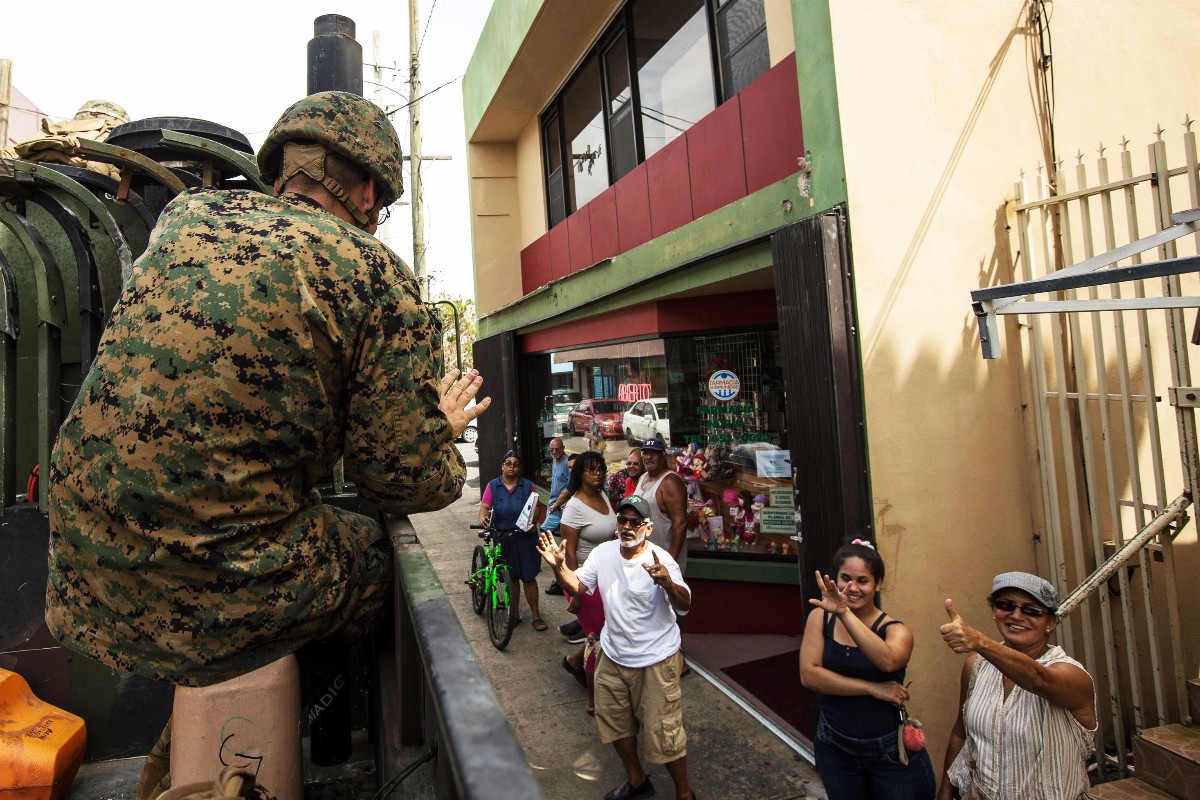
Applying Disaster 4Rs to Puerto Rico After Hurricane Maria
By Adam Siegel, ASP Adjunct Fellow
When it comes to the post disaster space, a major ‘lesson’ from the 1980s and 1990s U.S. military humanitarian assistance and disaster relief operations is that effectiveness (in saving people, reducing future risks, being efficient in use of resources) requires coordination across organizations and coordination across phases.
By ‘phases’, these can be summarized as the Three Rs:
- Relief: Life saving and getting minimal functions going for preserving life and reducing damage risks.
- Recovery: Help society move into a functioning stage so that people don’t need to leave and outside assistance can be reduced.
- Reconstruction: Measures to boost economic and social strength to pre-disaster levels (or, even better, better than pre-disaster).
In terms of efficiency resources use and increasing the odds for a successful outcome (which includes a lesser likelihood of having to do another relief operation tomorrow), integrating across these phases as much as (reasonably) possible is key. If one can do something in “relief” that contributes to “recovery” and is lays foundations for “reconstruction”, it is like getting a triple play.
For example, think housing. Tarps and tents are great for immediate shelter – fantastic for relief, marginal for recovery, and perhaps even negative for reconstruction. Having a container housing unit, like the US and allied militaries have used in places like Bosnia-i-Herzegovina and Iraq, blends from relief (quickly on site, quick to install) into recovery (housing elements that can stay around awhile). Deploying such ‘container’ units with plans and ways to incorporate into rebuilt infrastructure with (let’s say) high-wind and earthquake resistance takes that ‘shelter’ investment into a triple whammy or grand-slam solution.
Now, a container is more expensive than a tent — but that is a lasting investment rather than a (hopefully very) temporary path to the problem. A less expensive option comes from leveraging disaster-focused architectural options that can put local labor to work and leverage local materials to have permanent structures up in a day with about the same amount of transported in materials and total financial cost as occurs with a tent (and far less than a container). And, many such disaster architecture options will be less likely to suffer damage in the next disaster.
That lead to a fourth R: Resiliency: if that measure helps contributes to the potential for reducing future risks, we could hit a grand slam.
Distributed renewable energy is the blaring example of how to integrate across Disaster’s 4Rs As the grid gets knocked down, in places around the world, the diesel generators kick in and disaster relief organizations send in even more generators. That translates into high-cost and high-pollution demand for diesel fuel — which, by the way, undermines the Three Rs through resource demands (transportation of that diesel fuel that conflicts with other demands on the logistics’ system and, of course, the cost of fuel). With the price revolution in renewables (especially, in this context, solar photovoltaiics and associated systems), the costs of going ‘green’ in the disaster relief, rather than polluting diesel generators, has now gotten advantaged to the clean energy option.
And, unlike the diesel generator, it is quite straightforward to integrate a solar system across the 4Rs. Deploying distributed systems that have the ability to grid-connect become, as the grid reestablishes itself, part of the grid system – generating electricity throughout all phases and providing assurance of (at least limited) electrical services in the face of the next disaster.
And, also unlike the diesel generators, such renewable energy systems boost economic prospects in the recovery and reconstruction phases: free electrons from the sun not only save money compared to imported diesel, they also don’t contribute to transportation bottlenecks.
Hurricane Maria has devastated the Puerto Rican electrical system. Generators and diesel fuel for generators has been a major element of early relief deliveries. Solar panels, however, have not been a major element in US government relief efforts.
Hurricane Maria’s impact on Puerto Rico is hard to fathom – there is not a single sector, not a single community without major (even crippling) damage. Energy is critical to the 3Rs across all these sectors. Looking at Puerto Rico’s electricity situation, any honest analysis would conclude (differing, of course, as to specifics designs, how much, ..) that a rapid deployment of micro-grid solar would prove a 4R grand slam.
For US disasters, the Federal Emergency Management Agency (FEMA) needs to update its approaches — clean energy systems need to be a growing part of the ‘fly away’ kit for helping get emergency power to communities blacked-out by disasters (like New York/New Jersey post Sandy and Puerto Rico today, after Maria). And, the US government requires an integrated approach to this so the ‘fly-away’ solar is done in a way that enables rapid creation of renewable-powered micro-grids, ready to be hooked into a reestablished grid, to address relief that facilities recovery and contributes to reconstruction. And, the installations should proceed down a path so that the next time a climate-enhanced disaster hits the community, the solar keeps the lights on and lowers the costs/challenges of that next disaster’s 3Rs … truly a grand slam payoff.





